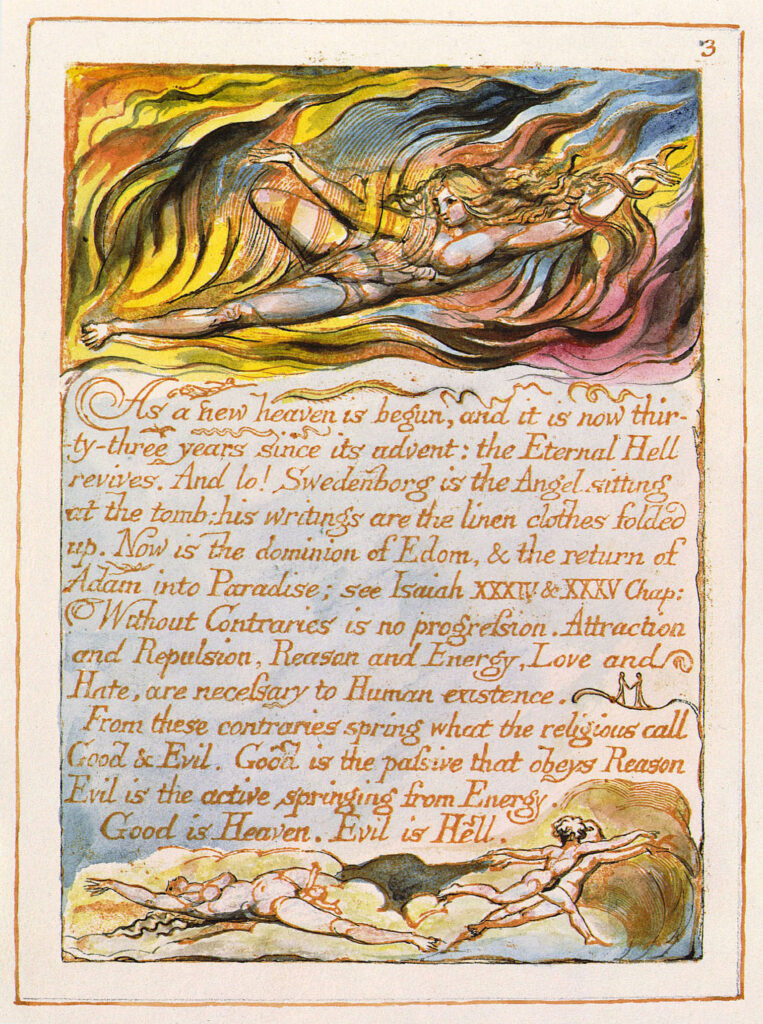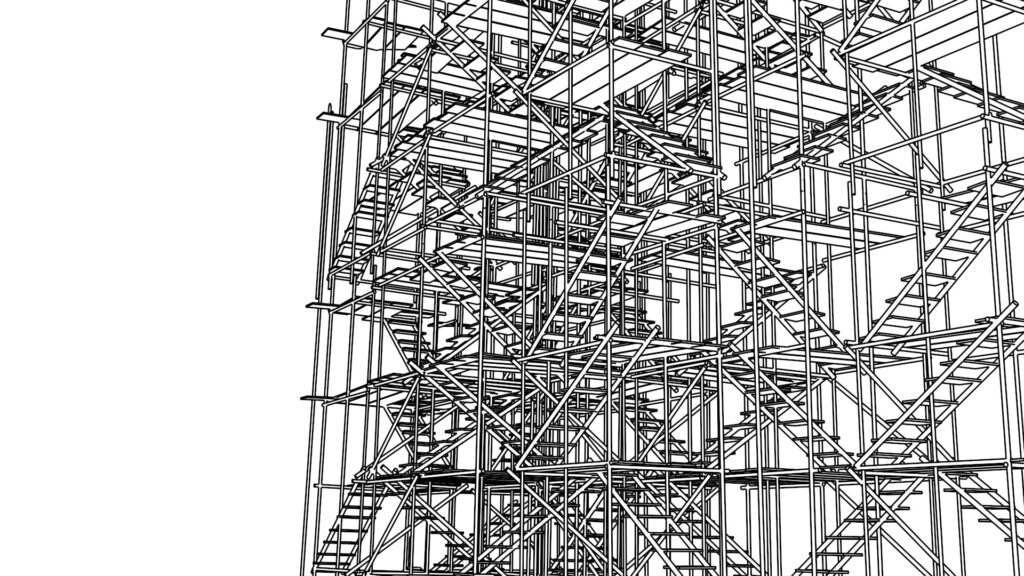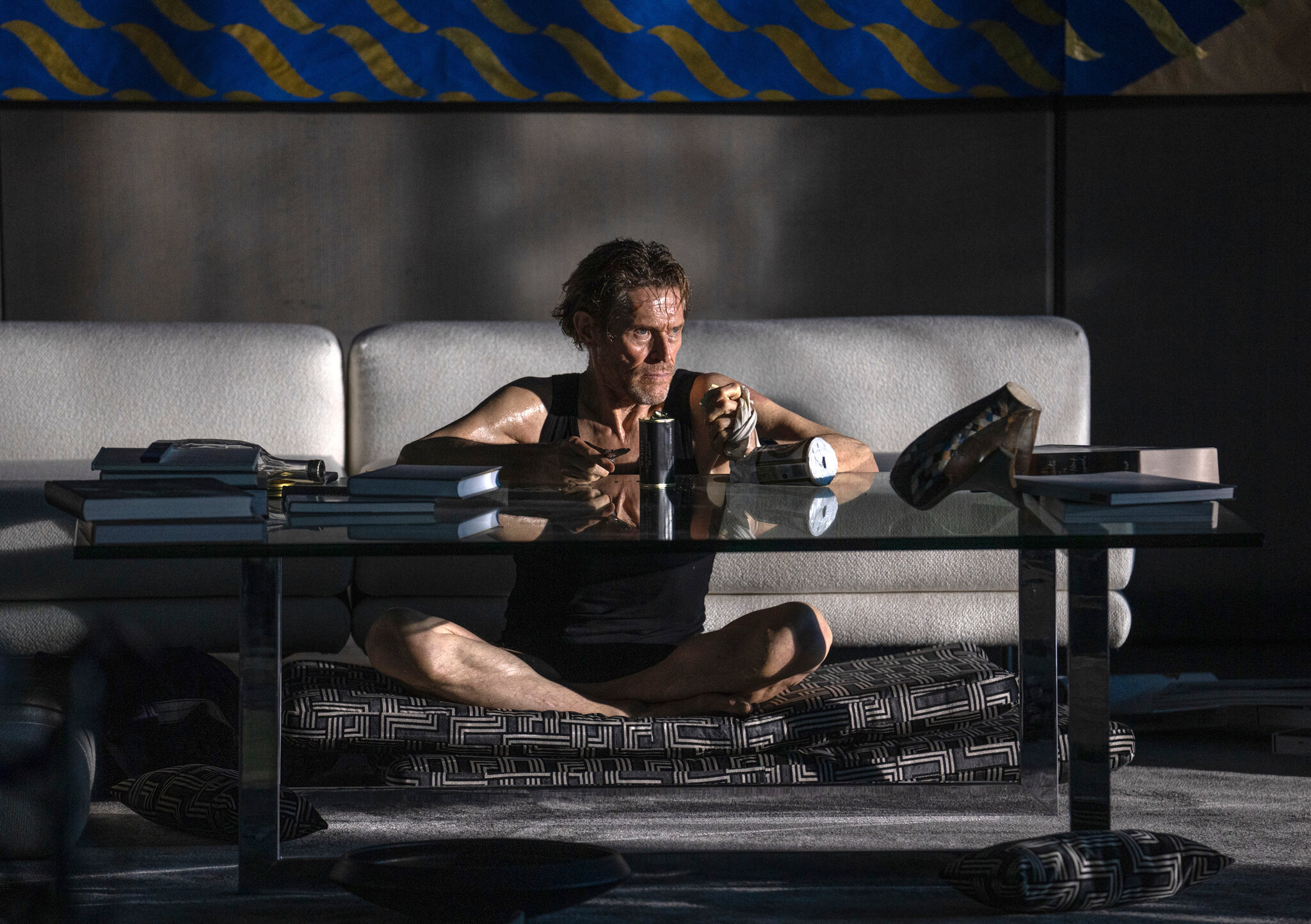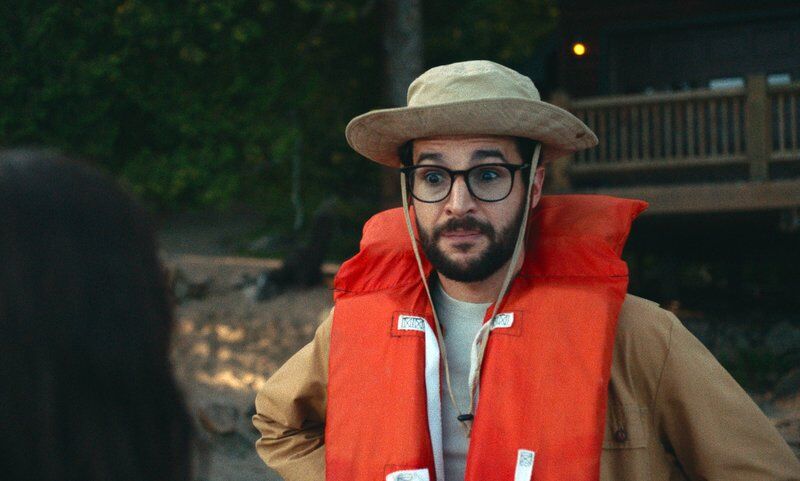Several Theories to Explain the 2023 Film Inside. Look… sometimes you need to explore more esoteric ideas, philosophies, and mental states from a more metaphorical standpoint via film. All films can’t be made up of coherence, can they? I’m thinking of the film Netflix film Platform… have you seen that? There is zero possibility that film is, or could be, real. Just isn’t possible. No, no no… even better? The film The Incident. These films just aren’t hinged off of reality in any possible way. Instead, they are ideas… cinematic mental schisms in order to force the audience to think more deeply about life in general and this experiment called existence. If that sort of cinematic cat-hairball is your thing? Then boy, do I have a movie for you. But, I’d warn you… please don’t bring your left hemisphere with you. It’s not going to help much. Why? We’ll get into that in a bit. But before you continue any further in this discussion – please make sure you watch the film first as this discussion is going to be chock full of spoilers.
An Explanation of the 2023 Film Inside
As the movie opens – the narrator, Nemo, an apparent art thief – tells a story from his childhood. A teacher asked the students in the class what three things would they save in their house if it was on fire? Nemo tells us that the three things he selected was an AC/DC LP, his cat, and his sketchbook. The cat died. The music was nicked by a friend that borrowed the album. But the sketchbook? His sketches would last forever. And with that we learn buckets worth about this interesting character, Nemo. A) We learn that he is disinterested in his family… I mean, he made a point of telling us that while the other children saved their families… he did not. B) We also learn that he is an artist with a real interest in art. “Art is for keeps” after all.
With the efficiency of a military operation – Nemo is inserted into a wealthy high rise apartment building. Quickly we understand that Nemo is no handyman, or repairman, though he appears to be. Instead he is a high-end art thief and that the owner of the apartment is away on a trip. Nemo’s ultimate goal is three specific paintings by Egon Schiele.
— WikipediaEgon Leo Adolf Ludwig Schiele was an Austrian Expressionist painter. His work is noted for its intensity and its raw sexuality, and for the many self-portraits the artist produced, including nude self-portraits. The twisted body shapes and the expressive line that characterize Schiele’s paintings and drawings mark the artist as an early exponent of Expressionism. Gustav Klimt, a figurative painter of the early 20th century, was a mentor to Schiele.
Only problem? Schiele’s self portrait – a painting valued at over $3 million – was missing. Where could it have gone? Only allowing a few minutes to get in and get out, Nemo had to leave the missing painting behind. But when he attempts to enter a code in the security system to allow him to leave, the computer controls for the apartment go nuts… and he is locked in. The men supporting his insertion, and his exit, decide they have to abandon him. And as the reality of the situation starts to settle in, he begins to assess the dire situation he is in. The thermostat swings wildly from cool to extremely hot. The water is turned off in the apartment. And there is very little food in the domicile. He goes from thinking he will be caught, to realizing he might just die locked up in here. It’s quite the swing of realizations. To underline this point, Nemo watches as a pigeon is trapped on the apartment’s patio, and dies.
Fast forward the clock. Weeks pass. Nemo begins starving as he also suffers the onslaught of injuries at the hands of his attempts to try and flee his prison. The focus of his exit strategies centers around getting up the skylights. Simultaneously, Nemo’s only real entertainment is the daily ministrations of a building cleaning woman whom he dubs Jasmine. He is transfixed… watching her any chance he can on the apartment’s security cameras. Worse, he manages to get extremely close to her when she cleans just outside the apartment doors. But she never hears his screams because she is always wearing headphones while she cleans.
When Nemo manages to find a secret compartment in the bedroom closet he learns that it contains the Schiele self-portrait. It also contains William Blake’s The Marriage of Heaven and Hell. Now, I have said this before, regularly, and I’ll say it again, because it stands to be repeated. Whenever a filmmaker includes a book (IE a character is reading it, or the camera focuses on it on a bookshelf… or the like) then you need to know more about the book. Movies are required to be extraordinarily efficient with their time… so there can be absolutely no wasted frames. If director takes twenty seconds to focus on a book, and then move on, they are saying something very specific with those twenty moments. So much so, usually, the entire point of the film is bound in that one book reference. (For a really good example of this, check out my write-up of the Thoreauvian Connection in Upstream Color.)
But what does William Blake’s Marriage of Heaven and Hell got to do with anything?? Hrm. Well, the book is a series of texts written in the style of Biblical prophecies. But instead of a Biblical worldview, it instead communicates Blake’s own personally romantically revolutionary beliefs. The book is actually a pile of printed sheets that came from etched plates. They contained prose, poetry and also illustrations. From there, he and his wife Catherine then colored the plates. Here’s an example of one:

Throughout the progression of the book, Blake posits that Milton’s Satan, within Paradise Lost, was actually his own Messiah. Hrm. Okay. How exactly did Blake not get burnt at the stake again? Remind me. hahah. Blake was opining during a time of radical political chaos… 1790, during the French Revolution. So Blake went on to state that a unified vision of the cosmos was necessary… a view in which the physical world and spiritual universe were one in the same. AKA a marriage between heaven and hell. All was a part of the divine order. Blake even takes a visit to hell as others before him had done, as his device for investigating these ideas. And, as he continues – Jesus, the Messiah, becomes the voice of restraint, while Satan is the revolutionary voice of liberty and desire. And ultimately, the notion that the body is separate from the soul and the spirit is utterly silly. That the body and the soul are specifically the same. Hrmm. Okay. That might be something interesting worth repositioning the way we think about this movie. We’ll keep that in our back pocket for now.
Speaking of the condition of the body – Nemo eats the gorgeous fish in the salt tank in the apartment. (Sorry, if you aren’t tuning your salt tank weekly, you will have a blow out, and all your fish will soon after die. Promise. But this is not a movie based in reality by any means.) Then he starts eating the dog food. And he soon after starts having hallucinations of things that are really not there. And during one drastic escape attempt at removing bolts in the skylight, he falls and breaks a leg. Our protagonist, Nemo, is not doing well at all. Eventually Nemo attempts to set off a fire alarm as he attempts to get help. But no one outside of that apartment notices. Nemo has slipped into an world of ether.
Nemo begins scrawling on the walls, in an attempt to communicate with the art collector, communicating to him about his childhood. He also apologizes for destroying his home – but that “there is no creation without destruction”… He finishes off his apology by letting him know that he had saved three pieces of art. With that, he clambers up the scaffolding, unhinging the skylight, and scampering up and out of view.

Initially, I crafted a theory based on my above comments. I considered the movie from beginning to end, and I weighted my theory predominantly on William Blake’s book The Marriage of Heaven and Hell. Then, I did something I never do here on THiNC., I read what other commentators and reviewers thought that the movie was doing. What its raison d’etre was. And holy cow were they wrong! hahah. Or I was wrong and thoroughly self-deluded. Either way! So, I figured I’d pull in a couple other theories while I was at it, and I’ve even included a couple links to source their line of thinking as well. Let’s do this…
4 Theories to Explain the Movie Inside
Artistic Myopia is all Consuming
Theory Author: Lucas Blue
It should be said that Lucas focused his ideas almost exclusively on the opening narration and on the films preoccupation with art. Basically Lucas posits that if one were to consume all their time and thinking on art, that they would myopically get trapped there. And, in so doing, they wouldn’t be able to connect to the people around them. He goes on to say that while Nemo was an artist, he was probably a failed artist. But that didn’t stop him from appreciating art, and being consumed by it. Nemo interacts with the art and each interaction with the art shows us how art affects artists and the world around them. (I mean… come on.) He goes on to posit that there are parallels in a piece of art entitled Christina’s World wherein she is trapped by fear and isolated from the world around her. Likewise, Nemo too is isolated from others due to his love for art, and his all consuming lust for these artistic pieces.
Response to the Artistic Myopia Theory
I mean, sure. At a really high level, the movie is 100% all about art. The movie consumes itself thinking about art. Art litters the walls around him. Then the walls become graffitied with Nemo’s own thoughts and art. So, yes. He’s right. But that is only the simplest of possible explanations in thinking about this film. It’s as if I were to say, Do Art for Art’s Sake! or Death by a Thousand Arts! But what is the meaning of behind the art? What is it that the art is saying about life? About Nemo’s life? About our lives? Shouldn’t we ask? And we shall.

The Invisible Curse That Is Technology
Theory Author: Shubhabrata Dutta
This theory focuses on how tech can turn from an asset to a cancer in a moment’s notice. It investigates the idea that security… tech. Home control? tech. And all of this tech, while it usually is our salvation through making our lives easier. But here? We watch as Nemo all but dies at its hands. He finds himself trapped by these supposed technological advances. But because of one simple deactivation code? He’s trapped, and maybe even dies as a result. See? Modern amenities? They will be our own demise.
Response to The Invisible Curse That is Technology
Mr. Dutta. I mean. Come on. You seem like an abundantly intelligent individual. Your English is amazing. Your grasp of complex ideas? Strong. But tech? Yes, technology traps him, but I see the technology in this movie as something of a plot device, and excuse, and nothing else. I personally think that the movie would have worked if he had been walking in a field, slipped into a hole, and was trapped in this underground apartment. Technology had nothing to do with his being trapped, and yet the movie works perfectly still. But Shubharbrata wouldn’t agree, I don’t believe. Again, another theory, and another surface level explanation.
Nemo As Art Installation
Theory Author: Kayleena Pierce-Bohen
I have to introduce myself to Kayleena – who has over 1700 posts published over on ScreenRant. (To put that in perspective, in over 10 years, I’ve published just at 2,000 articles.) But she publishes articles elsewhere as well. She’s a machine. Another reason for the needed introduction? I believe her theory is the closest to ascertaining a decent explanation for the film.
Kayleena believes that instead of Nemo being trapped in the real world, he has, himself, become an art installation. The scaffolding he creates to reach the skylight? Art. The sketches on the walls? Art. The messages and screeds slashed across the walls? Art. How does she come to this conclusion? Well, her main piece of evidence is that no owner would leave exotic fish to fend for themselves for so long. There is no water in the apartment, but when he trips the fire alarm? Water everywhere. Food? There isn’t nearly enough food in the apartment. Etc., etc. She’s definitely right. Nemo is trapped outside the real laws of physics. It’s really quite impossible this life that he is living.
Response to Nemo Being a Piece of Art
I personally think that Kayleena is heading in a decent direction here. She makes the logic leap that Nemo has left the concrete land of reality. She never states that we have entered a morality tale, but she definitely is implying something to that effect. More of a fantastical reality – an artistic reality instead of a morality tale. And I actually will relied on ideas that she pulled from in my explanation below. Specifically that Nemo is following in Blake’s footsteps in his own Marriage of Heaven and Hell through the creation of his wall plates. So, I don’t disagree at all with her. But I think there is a religious, spiritual, metaphysical piece to her answer that she is missing.
A Marriage of Heaven and Hell
Theory Author: THiNC.
Step back and look at this film. It makes zero sense from a reality standpoint. Zero. He is there for weeks… months? A LONG TIME. When he arrived the fridge was nigh on empty. Between the few crackers, the caviar, the fish in the salt tank… there wasn’t much to eat. The heat of the jacked up climate control unit? I mean… it just makes no sense whatsoever to consider this movie literally. Not in any way. It’s a morality tale. Or maybe not that, but at least it’s a spiritual discussion anyway.
We start the movie with a man that is coming to boost some art. He has evil in his heart. And the atmosphere, the world, that place of physical reality, fights back. It conspires against him. In one minute he’s a man in control – there is nothing stopping him. And moments later, he’s abandoned by his crack crew, and left to fend for himself. Also, we know that as time goes by, Nemo’s mind begins to slip, fall, and fade from the gravity of the real world, and slides out and back again. We know that he is caught in a bit of a super-transposition of sorts. He has left the concreteness of the real, and slipped into this wild and weird underworld.
Think back to Blake’s A Marriage of Heaven and Hell – the concept of these two ideas itself is paradoxical. The fusion of opposites. The Transcendence of dualities. Blake personally believed that heaven and hell were not separate realms, but rather two different states of a single consciousness. In his book, he argued that it was necessary to cling to them both… to embrace the light and the dark of life in order to achieve real spiritual fulfillment.
His book also grapples with the idea that opposites aren’t actually “contrary”… but rather that they are complementary and necessary for each other to make sense. There is no light without darkness. There is no darkness without light. This idea has been critical throughout Romantic Lit. and also philosophy as well. Nietzsche grappled with this idea as well.
But also, dipping into the thinking of Nemo as Art Installation – look at the aesthetics of his cell. It is destitute, sure. The bathroom being something of a nightmare. But the main room is transcendent. For giggles, regularly, I play with blender (3D CAD software) to build scaffolds and platforms and lines, lines, lines just because they are so aesthetically pleasing to me. Here, I’ll show you what I mean:

Dunno. Just love the lines of it. Better, is this platform the movie has created – and to watch as he sketches his platform? So great. But if you were to flip through the artistic panels of The Marriage of Heaven and Hell, you’ll see that the walls match the style and design patterns from the book. Murals and overlaying text/manifesto. Nemo is literally living in Blake’s book. It’s his own beautiful artistic theories come to life.
“Put it to us more simply man!” Fine, that’s fair. Sorry. I personally believe that the movie Inside, is an answer, or a sequel to, or a kindred spirit of, the book The Marriage of Heaven and Hell. Not that it’s a movie version of the book… bigger. I believe that the movie is its own spiritual dialectic and treatise. And the message that it is sharing is pretty similar to Blake’s book, but different. It is saying that the turmoil, the hell of life, is also the biggest exultant experiences of life. That if we were to dismiss the horrors of life we would also be missing the greatest experiences as well. Or something like that. That we should live in the moment of each day even when that moment is terrifyingly awful… like being consumed by a technological apartment monster determined to eat you whole. I joke, but I mean it. And for me it resounds… this idea. Yes, it could be that you have a flat, in the desert, and you have absolutely no idea how you are going to survive the 110 degree heat. But it should also be one of the most amazing moments of your life. You and your spouse might be on the verge of divorce, the two of you might just be missing each other 100% of the time… but you are alive. You can change. You can survive this moment. You will survive this moment. Not only that, but it’s in those moments that you are at your most spiritually incandescent. You are crying out to your Creator. Begging for His intervention. It’s then, at these desperate moments of utter loss that you are at your most exultant.
I might be off on the actual meaning of the movie/book answer to The Marriage of Heaven and Hell, but I’m pretty certain I’m correct in the idea that it is spiritual/physical response to Blake’s own work. I am currently coordinating with the writer and director, Vasilis Katsoupis, in order to see if I can learn more about this crazy film! Cannot wait.
BUT WAIT!!! DID HE MAKE IT OUT?
Hold up… after publishing this walkthrough, I had several people ask me a fairly (on the surface of it) simple question. Did Nemo escape? The question is necessary simply because it explicitly does not detail this answer out for us. And it’s complicated by two compiling issues… 1) We don’t actually see Nemo leave. We watch as he unscrews the bolt. But we don’t watch him go through the skylight. 2) We don’t even know what he finds on the other side of the skylight. It could be that there was no way down. Right? He could have moved from one trapped location to the next… AKA, the proverbial, out of the frying pan into the fire sort of situation.
So, here’s the question – did Nemo escape the high-rise trap in the movie Inside.
Well, in my conversation with Vasilis, I will ask. But I think I can say this pretty definitively… the title of the film is Inside. I’m guessing that the state of being trapped is not a physical question. It literally has nothing to do with his being stuck inside of the apartment. It’s more a existential question. So, let’s pose the question a little differently. Did Nemo become emotionally and existentially free in his soul after his being trapped in this “hell”?
Personally, I believe that Nemo was beginning to learn that his caged status was a spiritual one. He began to realize freedom through his art, and in his mental state. I mean, many people that are incarcerated say that being in prison is a spiritual question. Not a question of location. Walls and bars are just the external condition… a prison can’t capture a human’s soul. So, did Nemo take his cage with him as he left? I would argue that I think Vasilis saw him as having learned his lesson. Maybe? We’ll have to see.
Edited by: CY



